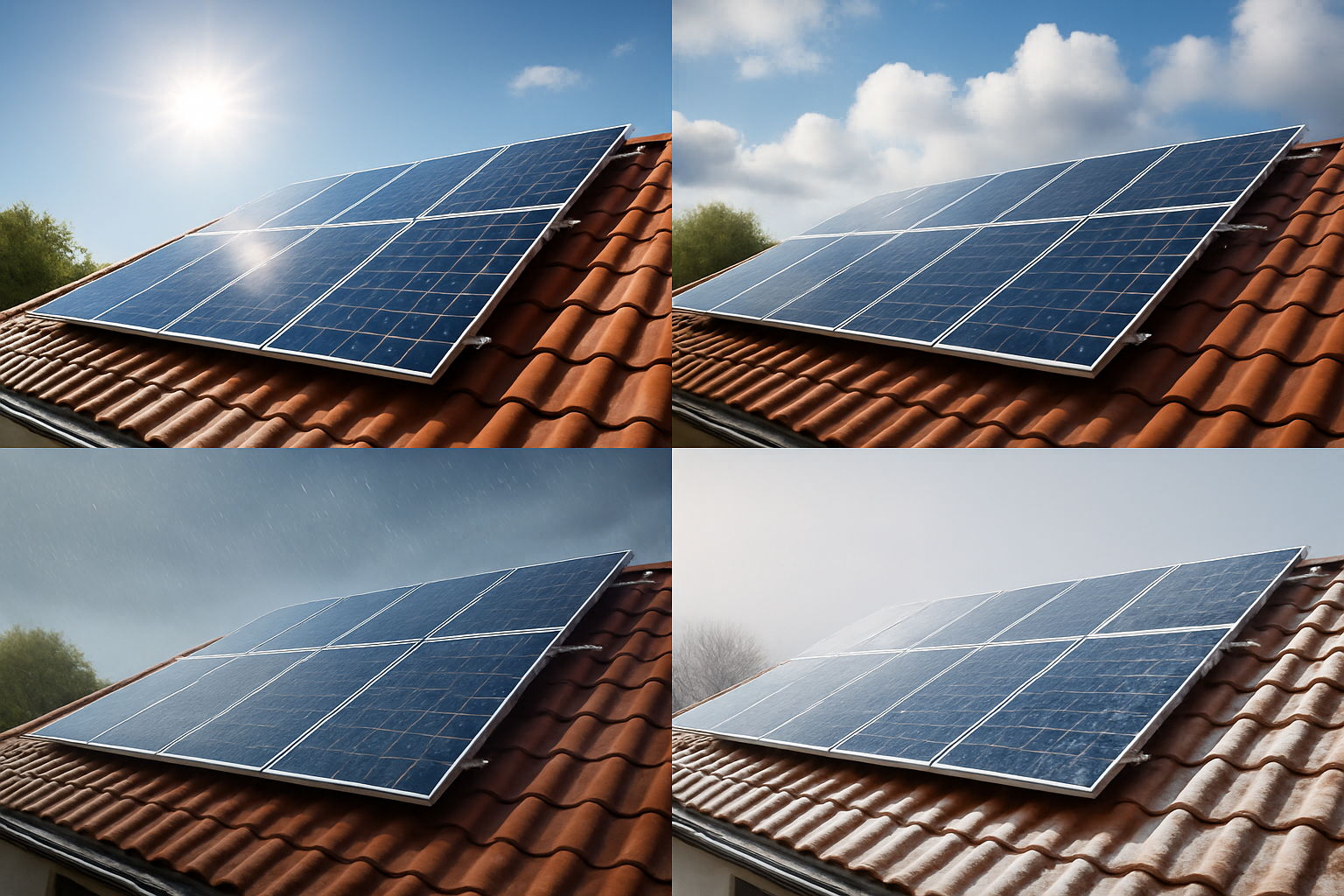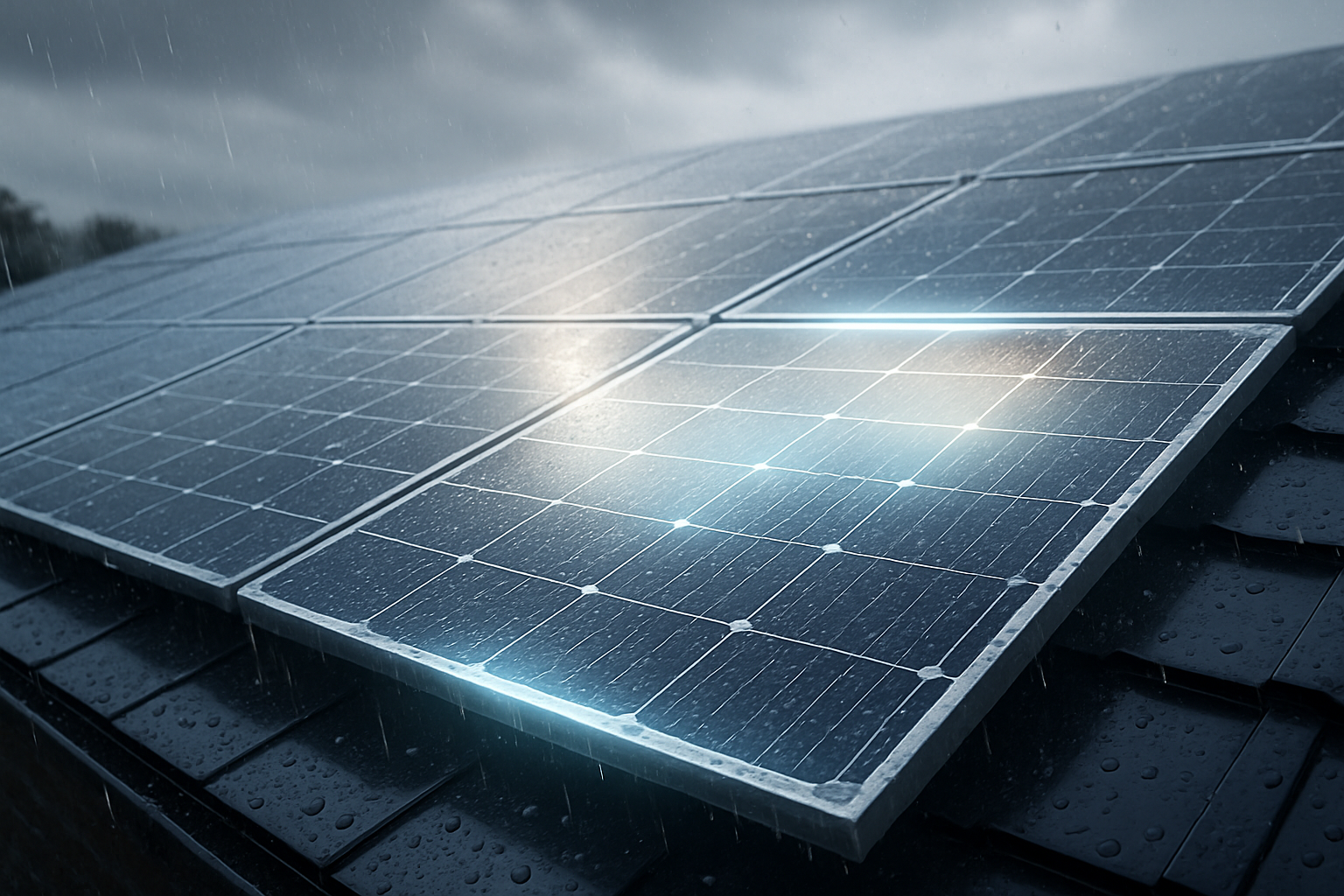Solar energy systems offer a pathway to sustainable power and energy independence. A key component in any solar setup is the inverter, which transforms the direct current (DC) electricity generated by solar panels into alternating current (AC) for household use or grid injection. However, the performance of these crucial devices is not always constant. High temperatures, a common environmental factor, can significantly impact an inverter's efficiency, leading to a phenomenon known as heat derating.
Understanding inverter heat derating is vital for anyone considering or operating a solar energy system. This knowledge allows you to anticipate performance variations and implement strategies to maintain optimal output. This discussion explores the reasons behind inverter derating due to heat and highlights how modern energy storage solutions can play a pivotal role in mitigating these effects, enhancing the overall reliability and efficiency of your solar investment.
The Impact of Heat on Inverter Performance
Inverters are sophisticated electronic devices designed to operate within specific temperature ranges. When ambient temperatures rise, especially in hot climates or confined spaces, the internal components of an inverter begin to heat up. This increase in temperature has several direct consequences for performance.
Understanding Heat Derating
Heat derating refers to an inverter's automatic reduction of its maximum power output when its internal temperature exceeds a certain threshold. This protective mechanism prevents damage to sensitive electronic components like semiconductors, capacitors, and transformers. As these components heat up, their electrical resistance can change, and their lifespan can be significantly shortened if they operate continuously at excessive temperatures. To safeguard the device, the inverter's internal software will reduce the amount of power it processes.
For example, an inverter rated for 5kW at 25°C might only be able to output 4.5kW or less at 40°C. This means that even if your solar panels are generating their full potential, the inverter limits the usable power, directly impacting your energy production and savings. This phenomenon is critical in regions experiencing prolonged heat waves or when inverters are installed in poorly ventilated areas, such as attics or small utility closets.
Factors Influencing Inverter Temperature
Several factors contribute to an inverter's operating temperature:
- Ambient Temperature: The surrounding air temperature is the primary factor. A higher ambient temperature means the inverter's cooling system has to work harder to dissipate heat, and eventually, it may struggle to keep the internal temperature below the derating threshold.
- Ventilation: Proper airflow around the inverter is crucial. If an inverter is installed in an enclosed space without adequate ventilation, heat can build up, leading to higher internal temperatures even if the ambient air is not excessively hot.
- Direct Sunlight Exposure: Direct exposure to sunlight can significantly increase the surface temperature of the inverter, transferring more heat to its internal components.
- Load on the Inverter: The more power an inverter is processing, the more heat it generates. An inverter operating at or near its maximum capacity will inherently run hotter than one operating at a lower load.
Consider the following conceptual example of how temperature might affect an inverter's output capacity:
| Ambient Temperature (°C) | Typical Inverter Output Capacity (%) |
|---|---|
| 25 | 100% (Rated Power) |
| 30 | 98% |
| 35 | 95% |
| 40 | 90% |
| 45 | 85% |
(Note: These percentages are illustrative and vary significantly based on inverter model and manufacturer specifications.)
How Energy Storage Solutions Mitigate Derating
Integrating energy storage, particularly advanced battery systems, offers a powerful solution to counteract the effects of inverter heat derating. By managing the flow of energy more intelligently, storage systems can reduce the stress on inverters and optimize their operating conditions.
Optimizing Energy Flow and Reducing Inverter Stress
When a solar energy system includes storage, the inverter doesn't always have to process the full immediate output from the solar panels. During periods of high solar irradiance and high ambient temperatures, excess solar energy can be directed to charge the battery bank instead of being immediately converted to AC. This reduces the instantaneous load on the inverter, allowing it to operate at a lower capacity and generate less internal heat. This is particularly beneficial for hybrid inverters, which manage both solar input and battery charging/discharging.
By shifting peak power conversion away from the hottest parts of the day or reducing the overall power throughput during those times, the inverter can maintain a cooler operating temperature, minimizing or even preventing derating. This ensures that more of the generated solar energy remains available for use, either directly or from storage.

Enhancing System Efficiency and Reliability
Energy storage solutions, such as those featuring high-performance, safe, and reliable lithium iron phosphate (LiFePO4) batteries, are designed to work seamlessly with solar inverters. These batteries can store surplus solar energy for later use, enabling greater self-consumption and reducing reliance on grid electricity during peak demand times, even if solar production is limited by inverter derating. For example, energy stored during cooler morning hours can be used in the hot afternoon, reducing the need for the inverter to work at full capacity when it's most susceptible to derating.
The development of sophisticated electricity storage technologies, often linked to advanced inverter systems, allows for greater control and flexibility in managing power flows. These innovations help to manage the variability of solar PV output and can even enable power systems to operate without conventional synchronous generation. This is particularly true for off-grid solutions, where reliable operations have been proven for over a decade in challenging environments.
For homeowners and those with off-grid solar solutions for homes, farms, or remote cabins, integrating a residential energy storage system (ESS) that combines LiFePO4 batteries with a hybrid inverter and solar panels offers a comprehensive approach. This integrated system not only addresses inverter derating but also provides robust backup power and allows for greater energy independence by ensuring power availability regardless of grid status or immediate solar output. This approach helps maximize the value of solar inputs by ensuring that generated energy is captured and available when needed, rather than being wasted due to system limitations.
Maximizing Solar System Performance
To ensure your solar energy system operates at its peak efficiency, even in challenging thermal conditions, consider these practical steps and the role of integrated solutions.
Strategic Inverter Placement and Cooling
Proper installation is paramount. Always ensure your inverter is installed in a well-ventilated area, preferably out of direct sunlight. If an indoor installation is necessary, consider active cooling measures like fans or ensuring adequate clearance around the unit for airflow. Regular cleaning of vents can prevent dust buildup, which can impede heat dissipation.
The Role of Integrated Energy Solutions
For those seeking reliable and scalable energy solutions, integrated systems that pair solar panels with advanced inverters and energy storage are the optimal choice. These systems are designed to work harmoniously, providing a resilient energy infrastructure. Our focus on lithium battery manufacturing and comprehensive ESS development means we provide solutions that help you achieve true energy independence.
By leveraging high-performance LiFePO4 batteries and integrated hybrid inverters, our solutions ensure that your solar investment delivers consistent power. Whether for a complete off-grid setup or a grid-tied system with backup capabilities, these integrated systems are engineered to manage energy efficiently, mitigate the challenges of inverter derating, and provide stable power for your needs.
Ensuring Lasting Energy Independence
Heat derating is a real challenge for solar inverters, but it is a manageable one. By understanding its causes and implementing strategic solutions like advanced energy storage systems, you can significantly enhance the performance and longevity of your solar investment. The synergy between efficient solar inverters and robust battery storage creates a resilient energy ecosystem, ensuring that your home or property enjoys consistent, reliable power, regardless of external temperatures.
Embracing integrated solar and storage solutions is a forward-thinking step towards greater energy efficiency and environmental responsibility. These systems empower you with control over your energy future, providing the reliability and scalability needed for true energy independence.
References
- Barriers to Technology Diffusion: The Case of Solar Thermal Technologies, International Energy Agency (IEA), 2006.
- Innovation outlook: Thermal energy storage, International Renewable Energy Agency (IRENA), 2020.
- Electricity Storage Valuation Framework, International Renewable Energy Agency (IRENA), 2020.





Leave a comment
All comments are moderated before being published.
This site is protected by hCaptcha and the hCaptcha Privacy Policy and Terms of Service apply.